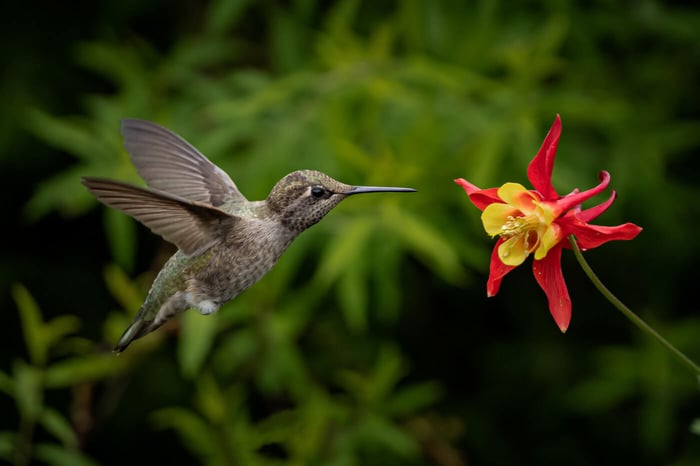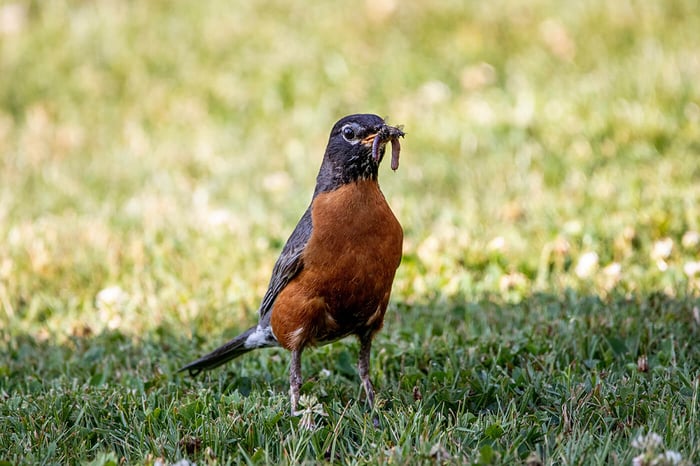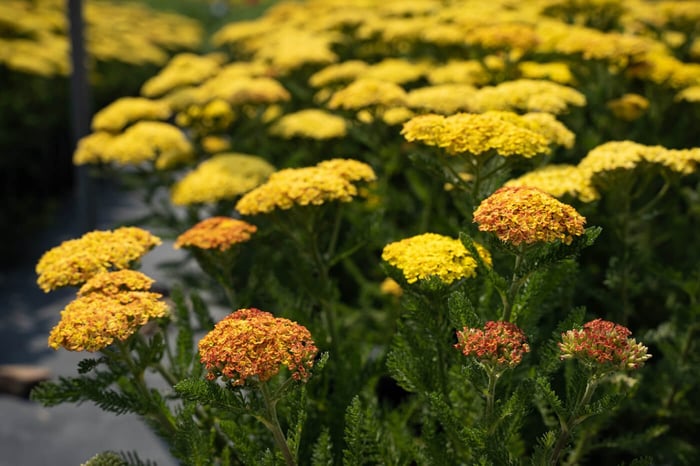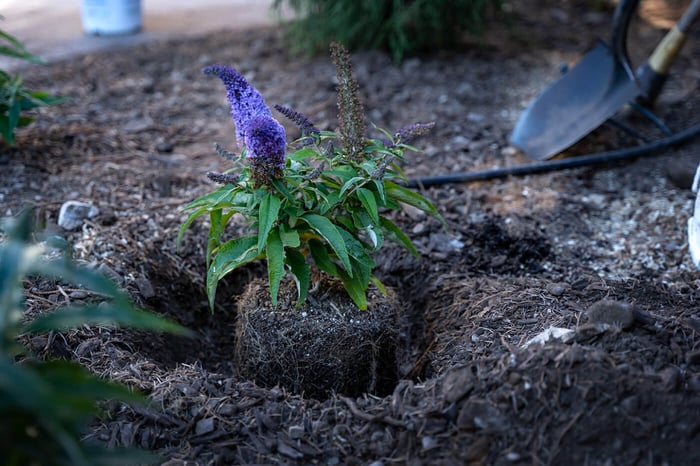Do you want to see more hummingbirds in your yard? They’re incredible little animals that only flit through the yard for a brief moment before they zip away.
In an attempt to see more of them, many of us hang hummingbird feeders in our yards to draw them in. The recipe is one part sugar to four parts water WITHOUT red food dye. Remember to replace the food every other day and clean your feeder thoroughly to prevent harmful mold growth.
Better still, you could plant the flowers they’re actually looking for.
It wouldn’t hurt to do both.

We really aren't sure if refined sugar and water is the best thing for hummingbirds. We DO know, however, that flower nectar is what they were designed to eat. Nectar is, essentially, nature's sugar water, but we like to believe it's a nutritionally superior option.
Whether nectar is healthier or not, the birds prefer it because it's slightly sweeter than what we put in our feeders. But if we were to add more sugar to our feeders, we could actually dehydrate the birds. So, flowers will always be a hummingbird's go-to food source.
If you want to draw more hummingbirds into your yard, here’s a list of 15 plants that they absolutely love (in no particular order).
Please Note:
These are all plants that we carry throughout the year, but they aren't always ready and available at the same time. We're mentioning them in this blog because they're ideal for hummingbirds. If you see something here that you want, but is not in stock, keep an eye on it so you can snag it when it's available.
Rose of Sharon
Rose of Sharon comes out of dormancy later in the spring than most other plants. It doesn’t start to bloom until mid summer, but once it starts, it doesn’t stop until late fall. That means that you’ll have big beautiful flowers to draw hummingbirds and pollinators into your garden for months at a time.
Phlox
Phlox are loaded with flowers from spring through summer. They are available in various sizes and several wonderful colors. They handle our growing conditions beautifully—hardy to zone 4, and they even tolerate water from Utah Lake!
Foxglove
This stunning plant shoots up stalks of bell-shaped flowers that catch your attention from a block away. You’ll love the variety of colors, and the hummingbirds will love you for giving them a special treat. Another plus: foxglove is also deer and rabbit resistant.
Liatris (Gayfeather)
If you want a stunning display from July through September, plant Liatris. This pollinator favorite is strikingly beautiful. Don’t be surprised if your neighbors ask about it, or if you see several hummingbirds dancing around it in the evening.
Monarda (Bee Balm)
If you’re looking for a plant that loads itself with color when it’s in bloom and looks great even when it isn’t, Monarda is a wonderful choice. It attracts pollinators and hummingbirds, but it’s also great for cuttings and flower arrangements in your home.
Honeysuckle
The sweet smell and bright color of honeysuckle is appealing to anyone. Hummingbirds especially like it. You can find honeysuckle in either vine or shrub form, and they grow in various sizes—so you should be able to get the perfect cultivar for your yard. Most varieties are hardy to zone 4, they tolerate our soil, and can even handle water from Utah Lake.
Hummingbird Mint
This is best when planted in large groups for a solid patch of color. In the summer it loads itself with showy spikes of small bell-shaped flowers that sway above its vibrant foliage. You can find hummingbird mint in a wide range of colors, and hummingbirds will surely find it in your yard.
Beard Tongue (Penstemon)
From a distance, you may think penstemon and hummingbird mint are the same plant, but they are quite different. Available in a variety of colors, penstemon is ideal for Utah landscapes. It’s tolerant of hot, dry conditions and is hardy to zones 5, 4, and even 3, depending on the cultivar, so it can handle both winter and summer temperature extremes. You’ll find several varieties that are tolerant of water from Utah lake, so you can essentially plant it and forget it.
Delphinium (Larkspur)
Delphinium is a bold, showy flower that is sure to draw attention. It ranges in size from nearly four feet tall to 10 to 12 inches tall. The flowers attract pollinators of all kinds, but they’re definitely a hummingbird favorite. Just remember that this plant can be harmful if eaten, so keep a close eye on toddlers and babies when they’re near it.
Lilies
A lily is the ideal shape for hummingbirds—bell-shaped and loaded with nectar. It’s easy for them to reach their long beaks into them and draw out a sweet treat. Lilies are wonderful for your garden because they come in so many different colors and sizes. You should be able to find several that appeal to your style and taste.
Columbine
Aquilegia, better known as columbine, is one of the most intricately shaped flowers in the plant kingdom and it’s perfectly shaped for hummingbirds. Their cup-like pedal blades lead to deep, hollow spurs that are often filled with sweet nectar. It’s sure to draw your attention and pique your imagination. Better still, they come in such a wide range of colors, you’re sure to find several favorites for your landscape.
Lupine
Lupine is famous for its tall spikes loaded with small, colorful flowers. It almost looks like colorful corn on the cob. You’ll love them in your garden, and so will the pollinators. Lupines can be a little tricky to grow because they like moist, well-draining soil. If you have heavy clay soil, they may struggle in your yard.
Salvia
This wonderful drought-hardy flower is often used in Utah landscapes because it simply lives here without a lot of fuss. The most popular cultivar is called May Night. While that is a nice salvia, it’s an older variety that tends to grow floppy as the season progresses. We would encourage you to check out the newer varieties that are more floriferous, more upright, and come in a wider variety of colors. Hummingbirds like them all.
Buddleia (Butterfly Bush)
Buddleia is one of our favorite herbaceous shrubs. Because it is herbaceous, you can cut it back quite far each fall and it will shoot back with new growth in the spring and summer. Butterfly bushes load themselves with flower spikes throughout the growing season from early summer to late fall. You’ll be amazed at how many pollinators are drawn into your yard just for a taste of buddleia nectar—bees, butterflies, and hummingbirds.

Trumpet Vine
We couldn’t leave Trumpet Vine off this list. It may be the most popular plant for attracting hummingbirds. It’s an amazing creeping vine that can turn a boring fence into something magical. This vigorous, deciduous vine features 15- to 20-inch arching stems with sprays of trumpet shaped flowers in late summer. It clings to wood, brick, or stucco and grows well even if you forget about it. Most varieties will grow from 15 to 40 feet long, but there are a couple of dwarf cultivars that only grow about 3 feet tall and wide. Our trumpet vines aren’t ready for sale at the moment, but keep an eye on our website so you can get yours when they’re available.
We’ve covered a lot of plants today, but believe it or not, this is still just a small sample of the plants you can use to attract butterflies, bees, and especially hummingbirds into your yard. Take a look at our online catalog and see what else you can discover. If you’d like help designing your landscape, we can connect you with some great designers on our website.


















